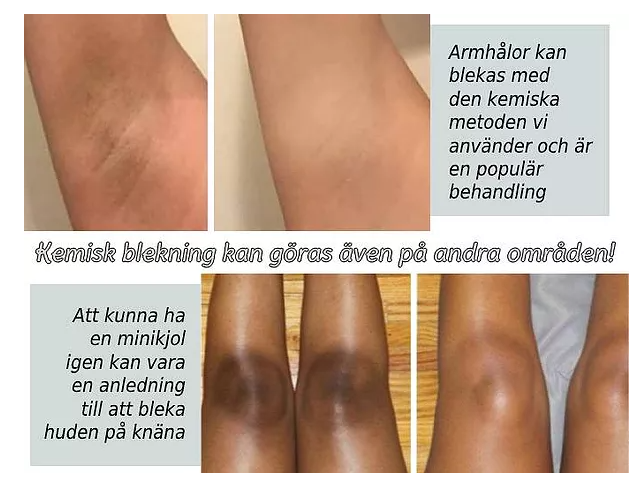Intimate bleaching
You’ve probably heard about it but what does intimate bleaching really mean and who does it?
Intimate bleaching first became fashionable in the porn industry. Back then it was called ‘anal bleaching’ as that was mainly the area that was bleached. Today, it is just as common to bleach the entire intimate area, inner thighs, armpits and knees.
Intimate bleaching is incredibly popular around the world. In some countries, it is estimated that between 60-80% of the adult population bleaches. In Sweden, it has existed for many years, but there are still only a handful of clinics who have the knowledge to perform this treatment.
Many people feel uncomfortable if they have darker pigments on certain parts of the body. In some cases this is due to hormones, pregnancy, friction or heat but it can also be congenital. You should be aware that it is natural and that the vast majority are darker in the intimate areas.

Does it really work?
It works for many, but not for everyone. Some people experience only a bit of lightening, while others can have dramatically lighter skin. Whether it works for you is impossible to answer before you test it out. Through Intimate Bleaching, most people can restore hyperpigmented areas to their original shade or at least as close as possible.
Who can do intimate bleaching?
Bleaching works best for, and is intended for, pigment changes caused by hormones, friction, heat or vitamin deficiency. You must be at least 18 years old – identification is always required regardless of age. You must be generally healthy. The skin in the area must be intact and without irritation. Skin type 6 – the darkest skin type – are advised to avoid this treatment as it is very unlikely to have any effect. If you are born with very dark pigments, it is unlikely that you’ll see results from bleaching. You must not be pregnant, breastfeeding or planning to become pregnant in the near future. Men must also not plan to become a parent during the treatment period and 3 months thereafter.



